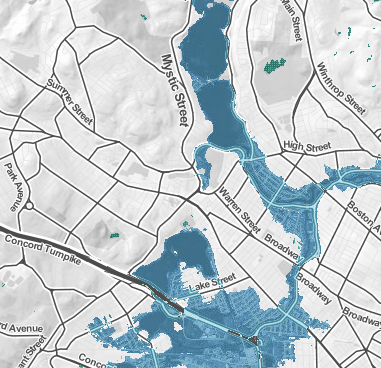Massachusetts' 2020 Economic Development Bill included a set of housing choice provisions: these require communities served by the MBTA to provide a district of reasonable size where multi-family housing is allowed by right. The law gives us significant flexibility to design a district that best suits our needs, but the district must allow housing suitable for families with children, without age restrictions, and at a rate of at least 15 dwellings per acre. Arlington is one of 175 MBTA communities in Massachusetts that share in the responsibility for meeting these requirements.
An ADU is a separate, smaller living unit with its own kitchen and bathroom facilities and separate entrance that is included within a larger resident (type 1), attached to a residence (type 2) or located in an accessory (“detached”) structure on the same lot as a main residence (type 3). For a variety of reasons, primarily cost and feasibility, the type 1 ADUs are by far the most common.
Accessory Dwelling Units (aka “granny flats”)
For Arlington’s Nov 2020 Special Town Meeting, my colleague Ben Rudick filed the following warrant article:
During the last few months, Arlington’s Department of Planning and Community Development and Zoning Bylaw Working Group have been conducting a study of the town’s industrial districts. The general idea has been to begin with an assessment of current conditions, and consider whether there are zoning changes that might make these districts more beneficial to the community as a whole.
from Banker & Tradesman, March 10, 2020: https://www.bankerandtradesman.com/63-percent-in-greater-boston-back-adus/ B&T produced a terrific report on the strong interest across the nation in allowing more ADUs (Accessory Dwelling Units) . This follows after California recently passed strong “YIMBY” legislation encouraging the developement of ADU’s.
by Amy Dain, for Pioneer Institute of Public Policy Research and Smart Growth Alliance, July 2018 (This study updates a 2004-06 study on ADUs by the Pioneer Institute.)
(Contributed by Ben Rudick and Steve Revilak)
Jennifer Susse authored this letter on January 20, 2020. Ms. Susse is a member of the Arlington School Committee and a Town Meeting Member. She closely follows the costs and demographic trends of school enrollment and of Town finances.
Climate Central’s Surging Seas global Risk Zone Map provides the ability to explore inundation risk up to 30 meters across the world’s coastlines as well as local sea level rise projections at over 1,000 tide gauges on 6 continents.
